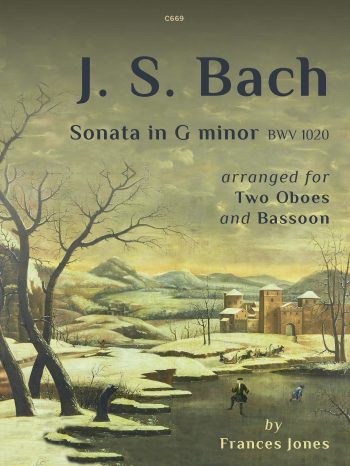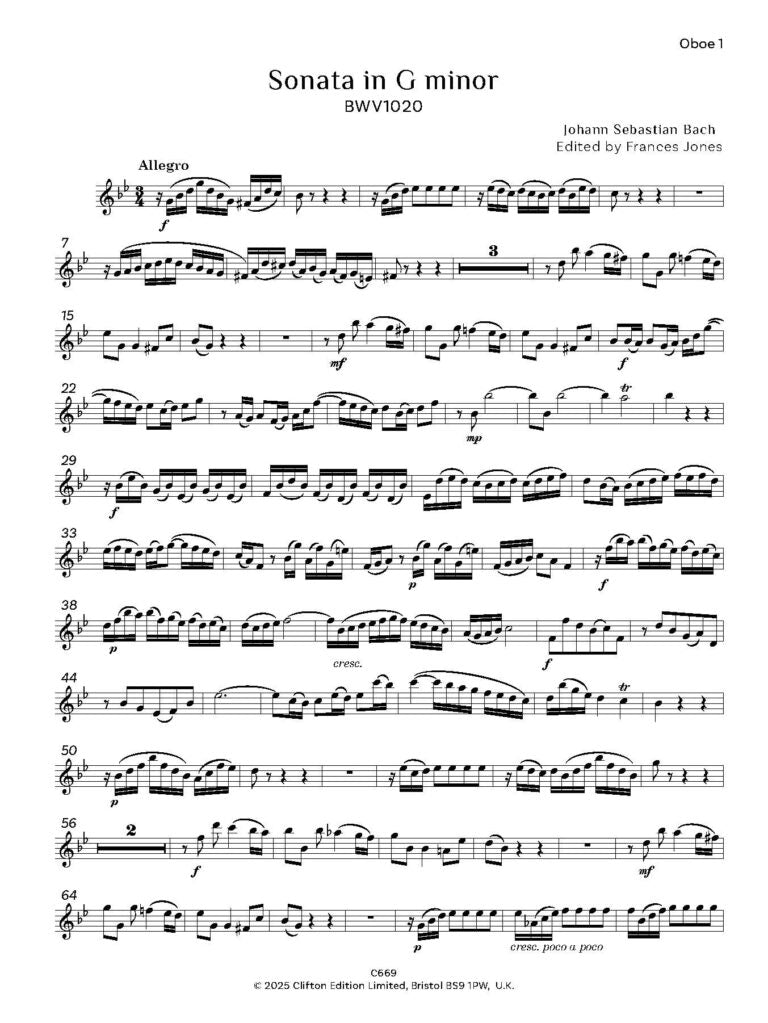Syrinx Music
Bach JS - Sonata in G minor, BWV 1020 for two oboes and bassoon - Digital Download
Bach JS - Sonata in G minor, BWV 1020 for two oboes and bassoon - Digital Download
Couldn't load pickup availability
Little is known about this work, and no original autograph copy exists.
The version upon which modern editions are based is a manuscript held in the Westdeutsche Bibliothek, Marburg/Lahn (Mus. ms. Bach 1059), stating Sonata del Sign. Bach in an unknown hand. There is much discussion about whether it was composed by Johann Sebastian or by one of his sons. Neither is the date of composition nor the original instrumentation known. The above manuscript specifies a sonata for violin and cembalo, but musicologists doubt the authenticity of this; the solo line does not go below a D, thus does not use the G string at all, nor does it contain any of the string crossing figurations common in baroque violin writing. The flute is much quoted as the preferred melody instrument, and the work was first published by Nagels Musik-Archiv as a sonata for flute and cembalo obbligato in 1931. The writing is not particularly well suited to the flute either as it contains much low detail which does not articulate or project easily on the flute, and does not use the top register of the flute at all. The work has been adopted by oboists in recent years, the tessitura, range and breathing requirements being ideally suited to performance on the oboe.
What is in no doubt, though, is the quality of wonderful music therein. It is for this reason that Frances Jones took the liberty of making this present arrangement of the work for two oboes and bassoon, as the writing seems particularly suitable for this. In the outer movements the keyboard part is entirely written as just two voices, the upper being very much an equal contrapuntal line to the ‘solo’ part. It only once ventures below the middle B flat, thus this second voice is all, with the exception of this one note, within the range of a second oboe player on a modern instrument. The bass voice sits comfortably within the range and style of a bassoon. In the central movement the writing occasionally splits to create a fourth voice, but the music loses very little in using only three for this arrangement. While the editor is not suggesting that this new version is a reconstruction of an original instrumentation of this sonata, nevertheless it suits the music well to play it on the instruments chosen here.
In making this arrangement, the editor has exchanged some of the music between the original upper two voices to highlight the echo writing in the original work and to balance the technical interest between the two oboists. Seventeen bars of figured bass (movement 1, bars 13-15, 18-20, 58-60, 63-65 & 93-98) have been elaborated into an appropriate second part. Dynamic marks are few and mostly editorial, offering suggestions for performance and a starting point for the players’ own interpretation. Similarly, the articulation marks are suggestions for the double reed sound and can be altered according to taste.
Share






